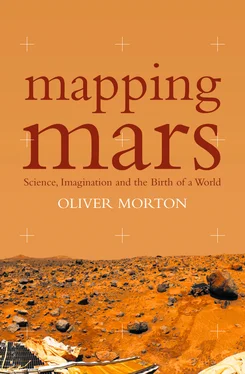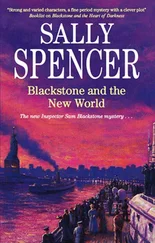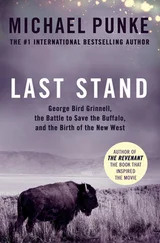1 ...8 9 10 12 13 14 ...23 Hal was at the same time a bright spark and a consummate committee man. He was charming but dogged, willing to get down into the details of sequencing spacecraft manoeuvres and download times whenever necessary, but also keeping a clear eye on the overall objectives. His astrogeological life became in large part devoted to the teamwork necessary for planning and running space missions, and he played a role in almost every major mission of the 1970s and 1980s, making sure they would send back pictures geologists could make use of. If Hal was on a committee, a planetary scientist who learned the political ropes back then once told me, it would get things done; if he wasn’t on a committee, then you didn’t want to be on it either. It was probably not an important one, and it might well not get anywhere.
Masursky was good at getting committees to work; in his personal life his gift for structure was less evident. Committee work meant he was endlessly travelling. (It’s said that at times he lived in Flagstaff without a car, preferring simply to rent one when he flew in just as he would anywhere else.) His ability to keep projects he was administering within budgets was famously poor. He was married at least four times, religious and passionate in argument. He was diabetic, but rather than accepting the discipline of managing the condition he let his team do so for him. Jurrie van der Woude, an image-processing specialist then at Caltech and later at JPL, remembers finding Masursky passed out on the floor of his office late one night during the Mariner 9 mission. Jurrie shouted for help and people came running – people already armed with candies and orange juice, because they knew what to expect. ‘From that point on I was part of the club. No matter where you went around the lab you’d carry orange juice with you. Nobody talked about it, but in press briefings there’d be four or five of us like secret servicemen, waiting and watching for the right time to bring him orange juice. He had this kind of a smile and every so often you’d realise that behind it he was just gone.’ Eventually diabetes took its toll; in the late 1980s Masursky sickened, dying in 1990. During his sad decline, he would occasionally elude his last, devoted wife and wander off to Flagstaff’s little airport, sure he should be going somewhere. Now he has a crater on Mars: 12.0°N, 32.5°W, a hole 110 kilometres across in the region called Xanthe Terra.
When Mariner 9 set forth from earth in 1971, no one had seen Xanthe in close-up. No one had seen the crater that would one day be named for the principal investigator on the television team, or the striking channel that runs next to it and quite probably once filled it with water, Tiu Vallis. No one knew that Mars offered such sights. Mariner 4 had seen a moonlike surface covered in craters. It had measured the atmospheric pressure as being much lower than most measurements from earth had suggested – about 1 per cent of the pressure at sea level on earth. The long-held picture of Mars as a basically earthlike if very marginal environment – something like a cold high-altitude desert, except worse – was demolished. The surface had to be very old to have accumulated so many craters; the atmosphere must always have been very thin and free of moisture for the craters not to have eroded away. From the composition of the atmosphere – 95 per cent carbon dioxide – and measurements of its temperature and pressure – both low – Leighton and Murray had been able to predict that the polar caps, which earthbound observers had seen as water ice that might moisten their imagined earthlike desert, were in fact made of frozen carbon dioxide. Mariner 7 seemed to confirm this theory when it passed over the south pole carrying infrared instruments capable of measuring the surface’s temperature and composition, and found it to be as Murray and Leighton had predicted.
Admittedly, Mars was not all craters. Mariner 6 had seen that Hellas, known as a large bright region to the earthbound astronomers, was much smoother than the cratered terrain next to it, though no one could say why. The same spacecraft also sent back pictures of an odd terrain quickly termed ‘chaotic’, a collapsed jumble of a landscape from which a few table-top mesas stood proud. It was as though the land had rotted from within. But though such features might prove interesting, the general impression was of a dull, geologically inactive place, more or less unchanged since the creation of the solar system, a place little more interesting than the earth’s moon and far harder to get to. Bruce Murray, who unlike many in the business had never had a boyhood romance with the stars, took a certain delight in debunking the delusions of people who still wanted to think of Mars as at least a little earthlike. Murray has a certain intellectual aggression, as do many Caltechers – the USGS geologists on Mariner 9 used to be amazed by the frequency and ferocity of the arguments that Murray’s students on the team, Larry Soderblom and Jim Cutts, would get into. Nostalgic notions of an earthlike Mars gave Murray’s belligerence its casus belli. Mars was simply not what people had thought it to be. Rather than a world to be experienced in the imagination, it was a planet to be measured, a planet in the new space-age meaning of the term, something woven from digital data streams and ruled by the hard science of physics and chemistry.
On 12 November 1971, the night before Mariner 9 was to go into orbit, Caltech held a public symposium on ‘Mars and the Mind of Man’ featuring Murray, Carl Sagan and the science fiction authors Arthur C. Clarke and Ray Bradbury: it was the genteel ancestor of the bigger, brasher Planetfests which accompany today’s missions. Murray cast himself in wrestling terms as ‘the heavy – the guy with the black trunks’. He acknowledged people’s ‘deep-seated desire to find another place where we can make another start … that is not just a popular thing [but] affects science deeply’. He then set about using his experience of Mariners 4, 6 and 7 to pour cold water – in fact frozen carbon dioxide – on such fancies. Carl Sagan, a new member of the television team and already a passionate advocate of the search for life in planetary exploration, responded by saying that nothing seen so far had ruled out life on Mars – it had just made it harder to imagine if you were parochial enough to imagine all life must be like earth life. Clarke optimistically suggested that if there wasn’t life on Mars in 1971, there certainly would be by the end of the century.
While Clarke and his colleagues spoke in Caltech’s auditorium, events up at JPL were turning out quite dramatic enough without any added fiction. One of the reasons that 1971 was a good time to launch the first Mars orbiters was that Mars, which has a markedly eccentric orbit, would be at its closest to the sun at the time when it was most easily reached from the earth. Unfortunately, perihelion warms the Martian atmosphere up quite a lot and the resultant winds can kick up dust storms. This possibility had been discussed earlier in the year by the Mariner mission operations team. Brad Smith, Masursky’s partner at the helm of the television team, said it would not be a problem. But Smith was wrong. The great storm started on 22 September. Within a few days almost half the southern hemisphere was obscured by the brilliant cloud and a week later a second storm started further to the north. Soon the storms merged. Telescopes on earth saw a Mars utterly without features – and so did Mariner 9. Its first pictures, sent back on 8 November, revealed no detail whatsoever – wags joked that they had arrived at cloud-covered Venus by mistake. On 10 November, when the pre-orbital images should have been as good as those from Mariners 6 and 7, all that could be seen was the faint outline of the south polar cap and a faint dark spot. It turned out to correspond to the location which Schiaparelli had called ‘Nix Olympica’ – the Snows of Olympus. Two days later three more dark spots were seen a few thousand kilometres from Nix Olympica, forming a line from south-west to north-east across the region called Tharsis. The rest of the planet was still completely blank.
Читать дальше












